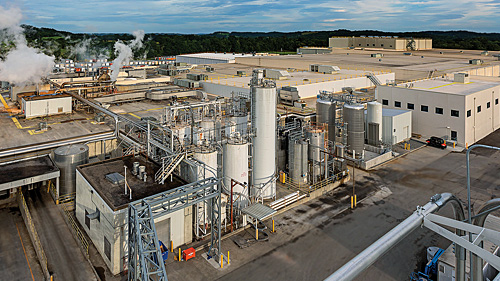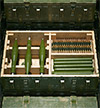Compare that to locating a new manufacturing facility. As many as 70 or more different variables can influence site selection — from infrastructure, logistical, and incentive considerations to permitting requirements, staffing needs, and community acceptance concerns. Site selection models for these facilities, therefore, can be notoriously complex. The strengths or weaknesses of each alternative can potentially impact facility design and a host of other variables, making the process of comparing and ranking alternatives even more challenging. Apples-to-apples comparisons of sites are rare.
Some site selectors are better equipped to conduct searches that involve complex infrastructure and permitting requirements than others. A closer look at manufacturing site selection criteria illustrates why.
Factors That Impact Site Selection
The goal of any site search is to identify locations that support a manufacturer’s long-term operational success. The more a site selection team knows about the company’s products, production methods, and infrastructure requirements, the better.
A site selection team must also have a detailed understanding of the owner’s site selection criteria and their relative importance in the decision-making process. These criteria typically fall under these broad categories:
- Logistics: Site selectors need to know the sources of the manufacturing facility’s raw materials, the final destination of its finished products, and the transportation resources available so that there is timely and efficient movement of both. Depending on a community’s size, a new manufacturing center can place significant demands on existing infrastructure.
- Infrastructure: This includes electric, water, and wastewater capabilities; condition, size, and proximity of local roads and highways; and rail and port access. Depending on a community’s size, a new manufacturing center can place significant demands on existing infrastructure. Knowing what, if any, infrastructure upgrades or process changes are needed for a community to accept a manufacturer’s additional load is critical, as is understanding the community’s interest in and commitment to making any needed accommodations.
- Permitting: Some site locators are skilled at identifying sites suitable for manufacturing. The question is, are these sites suitable for the project under consideration, which may require system redundancies, special air permits, or capabilities for handling particular effluents? It is not only a question of how quickly permits can be obtained, but if they are even obtainable.
- Entitlements: Permitting questions should be addressed early in the site selection process for many reasons. Perhaps the most important is their bearing on entitlements — the legal right to develop a property for a certain use or type of building — that government bodies must grant before a project can move forward. Entitlements can be a major factor in determining the use, viability, and value of a property under consideration and should be part of the upfront discussion with local, state, and federal officials who have jurisdiction over a site.
- Public opinion: Manufacturers don’t want to wait until a site is selected to find out the host community’s position on their project. Projects that create demand for housing, infrastructure, schools, or immigrant labor can produce widescale opposition in some communities — while being welcomed with open arms in others.
The site selector must be upfront about planned operations when working with local communities. Public opinion can sometimes be swayed when stakeholders understand a project’s full impact on their community, but it is often an uphill battle. Manufacturers generally prefer to eliminate sites in uncooperative communities early and focus on those in places that are more amenable.
- Workforce: Site selectors must understand the manufacturer’s workforce needs and a prospective community’s ability to meet them. Not every location has access to the people and training needed to deliver necessary staffing, nor interest in recruiting new workers who meet a manufacturer’s requirements. This information is valuable because it informs engineers as to whether to go manual or to automate portions of the operation to fill in gaps in skills and training. Further, as the manufacturing workforce is often comprised of laborers with specific skills and abilities, it is valuable to align an accurate assumption of workforce demands as determined by both company leadership and process design professionals early in the site selection process.
- Local tax environment: Taxes can have major implications on a plant’s economic feasibility and long-term viability. Understanding local tax rates and histories can shed important light on a potential site.
- Incentives: While economic incentives can play an important role in site negotiations, they should not be treated as deal-makers. Most incentives offer short-term benefits — often 10 years or less — that become less valuable when viewed through the lens of a manufacturing plant’s 50-plus year design life. Because their value is short-term, in other words, most incentives do not guarantee a facility’s long-term operational success.
Site Selection Team Choice Matters
Given the complex interrelationships between site selection variables, the team an owner chooses to lead its site selection program matters. There is no shortage of options to choose from, each with its own advantages and disadvantages.
Some owners look first to their in-house engineering and strategic planning staffs, both of which can provide helpful insights on where and how the manufacturer can grow its business. Many accounting and business consulting firms also tend to offer site selection capabilities. They, too, can be helpful in identifying the geographic regions where a manufacturer should focus its growth, as well as the benefits and liabilities associated with locating within specific states and regions. Once a specific region is identified, some owners turn to commercial real estate firms with expertise in searching real estate databases and identifying potential sites and incentives programs.
Each of these groups has specialty knowledge that can prove beneficial to a manufacturer. But their collective understanding of a facility’s operational needs and its 70-plus site selection criteria is, more often than not, incomplete. Depending on their area of expertise, each might weigh the criteria guiding the selection differently — or make recommendations using partial or inaccurate information.
There is arguably one group that understands both the big-picture needs and fine-print details on any new manufacturing facility, i.e., the team responsible for the planning, design, and construction of the plant itself. This group, capable of taking a project from initial site selection criteria through to project commissioning, understands the specific demands a new plant places on local infrastructure. It can also describe a manufacturing operation’s logistical demands, permitting challenges, and staffing needs with pinpoint accuracy.
By expanding the design and construction team’s role to include site selection in a turnkey approach, an owner also gains an extra layer of due diligence on potential sites. Advantages of a Turnkey Approach
By expanding the design and construction team’s role to include site selection in a turnkey approach, an owner also gains an extra layer of due diligence on potential sites.
When economic development groups promote sites, they often provide detailed maps that include information on electric, sewer, and water infrastructure; environmental considerations; and other site features. All site selection firms are expected to perform due diligence to confirm the accuracy of this information. However, a turnkey firm — one with the capability to take a project from site selection through process design and construction to commissioning — will go a step further. Not only will a turnkey firm have the ability to work entirely in-house to verify that the infrastructure and features exist, but it will also confirm capacities and redundancies, rail-serve capabilities, and dozens of other details. All this data will be loaded into a site selection model created specifically for this particular site search.
A turnkey firm, in other words, can model a site and assess how well it meets the owner’s needs. It can also determine if a site lives up to a developer’s characterization of it. If discrepancies are discovered, the firm can pursue concessions or drop the site from consideration. In fact, the intricate site selection models created by turnkey firms work almost as efficiently as the relatively simple models used for pharmacy and supermarket site selection. With the help of sophisticated analytics, a turnkey firm can quickly winnow a list of 30 potential manufacturing sites down to three. Importantly, these models put turnkey firms in an ideal position to know what selection criteria a given site is missing and what incentives are needed to make a property a stronger candidate.
Let’s say that due diligence efforts find that the roadways entering a proposed 300-acre site lack turn lanes and other infrastructure critical to the plant’s operation. This information can be invaluable when negotiating incentives. A turnkey firm can often leverage these findings to negotiate an incentive that is meaningful to the owner: additional infrastructure investment.
Likewise, an incentive program that supports an electrical capacity increase might be very attractive to an owner when a proposed site cannot accommodate a plant’s electrical load. Such an incentive program, however, can only be proposed if the site selector has the foreknowledge needed to recognize and propose it early in the site search.
The bottom line: Turnkey, full-service engineering, design, and construction firms approach site selection from a unique vantage point. These firms understand both the demands a new manufacturing plant places on a site and the obstacles that can impede its design, construction, and efficient operation. That puts turnkey firms in the right position to select sites that are well-suited to a manufacturer’s operation and supportive of its long-term success.




